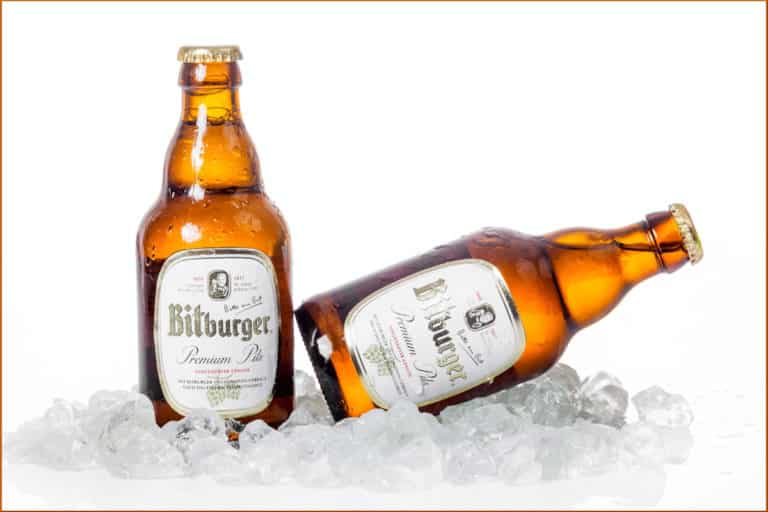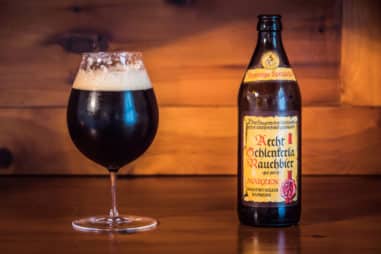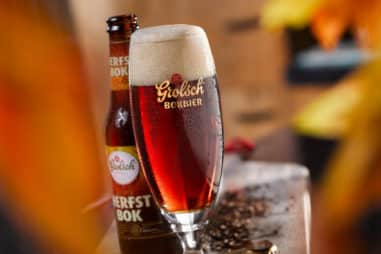German Pilsners or Pils for short are one of the most popular beers in Europe. And it’s not hard to see why.
A German Pilsner is characterized by its malty sweetness with pronounced bitterness and hop flavor. However, there’s more to it than just that.
How is it made? And what makes it different from Czech Pilsners? You’ll find out in this guide.
Is a German Pilsner an Ale or Lager?
German Pilsners are categorized as lagers, specifically bottom-fermented lagers brewed from barley malt. This pale lager has excellent head retention, is gold-colored, bitter, and has a floral hop aroma.
In addition, German pilsners aren’t just any ordinary lager. They’re one of German’s most iconic beers today. To this date, it stands as one of the most loved beers across the country.
How Would You Describe a German Pilsner?
A German Pilsner is light-bodied, highly attenuated, and has an elegant floral hop aroma. According to the BJCP Style guidelines, German Pilsners are clean, crisp, and refreshing to taste.
What about its other qualities? Here’s a table to show the full style guidelines of a German Pilsner:
| German Pils (BJCP Style Guidelines) | Definition |
| Appearance | Has a straw to light gold appearance and is brilliant to very clear. Head retention is excellent and has a creamy long-lasting head. |
| Flavor | Medium to high hop bitterness dominates and then lingers into an aftertaste. Malt takes a supporting role with a grainy-sweet malt character. Hop flavor is low to high with spicy, floral, or herbal notes. Crisp, dry to medium-dry well-attenuated finish with a light maltiness and bitter aftertaste. Some versions will have more malt flavor and noticeable hop flavor and bitterness. |
| Aroma | Medium-low to low grain sweet and rich malty aroma. Usually light toasted or honey quality. There should also be some spicy, floral, or herbal aroma notes. Hop aroma should be moderate-low to moderate-high but doesn’t dominate malt presence. |
| Mouthfeel | Has a medium-light body with medium to high carbonation. |
| Other Notes | SRM color is between 3 to 4 with an IBU range of 25 to 50. ABV is 4.6% to 5.3%. |
German Pilsner is the ancestor of the original Pilsner brewed in the town of Plzen (Pilsen) in Czech Bohemia. Back in 1842, Josef Groll brewed the first Pilsner. Then, about 30 years later, German breweries adopted the style and started brewing their own version.
Now, you’re probably wondering. Why is it called Pils? Mainly to differentiate it from the Czech Pilsners and according to some, to show respect.
Are German Pilsners Hoppy?
German Pilsners have an obvious hoppy presence. In other words, hops don’t exactly take the supporting role in a German Pilsner.
To properly define a hoppy beer, there have to be noticeable traits of hops in regards to taste and aroma. Safe to say, German Pilsners are hop-forward lagers. Malty presence is still noticeable and, in fact, hop bitterness is one defining characteristic of Pilsners.
Are German Pilsners Dry Hopped?
A German Pilsner uses late hopping, which is the process of adding hops after the kettle boil. Another term for late hopping is also called dry hopping. And in effect, this adds oomph to your beer’s hop flavor, aroma, and bitterness.
Dry hopping is also common when brewing an IPA. However, an IPA will have a stronger hop aroma and flavor than a Pilsner. And that’s because German Pilsners should still have a perceivable malty sweetness both in flavor and aroma.
On the other hand, IPAs lean more towards bitterness and hops taking dominance over the flavor profile.
What Is German Pilsner Malt?
German Pilsner malt is a special pale lager malt made from 2-row spring barley. It’s a special malt because it’s specifically used to brew Pilsners. Flavor-wise, German Pilsner malt adds a delicate maltiness with light biscuity and bready notes.
As for the aroma, this pale lager malt gives a sweet and malty residual aroma to your beer. Appearance-wise, it’s usually very light in color. It also tastes crisper and thinner, which is a noticeable characteristic you’ll taste in your beer.
Some say that German Pilsner malt is under-modified. However, it’s modified to the extent that doing a single-step infusion mash won’t cause you to run into any issues. In fact, some recipes for German and even Czech Pilsners will use 100% Pilsner malt as the grain bill.
What Is the Difference Between a Czech Pilsner and a German Pilsner?
Czech Pilsners are the first Pilsners, put simply. The style started in 1842 in a brewery called Pilsner Urquell. As for the name, the style in itself is sealed in the Czech language: Pilsner translates to “from Pilsen” in Czech.
This is one major difference between the two. And it also means…the German Pilsner is an adopted style of the original Czech style that was brewed 150 years ago. German Pilsners were first brewed in the 1870s and adjusted to fit their domestic hop varieties and mineral water profile.
Now, what about differences in style and taste? Czech Pilsners have a low to medium hoppy presence. Its appearance is also a moderately tinted pale-yellow color. Flavor-wise, a Czech Pilsner has toasted biscuit, bready, and slightly sweet flavors.
Compared to Czech Pilsners, a German Pilsner is drier and crisper. It’s also lighter in both appearance and body. In addition, hop aroma is more pronounced in a German-style Pilsner. And finally, bitterness lingers more in German Pilsners and has higher carbonation.
What’s common in both styles, though, is the brewing process, specifically fermentation. Both Czech and German Pilsners should be fermented in cooler temperatures of 50°F (10°C) and undergo cold maturation. During this stage, Pilsners are stored at temperatures just above freezing temp.
Ultimately, this process of fermentation and cold conditioning is necessary for the style. Why? Because it’s what makes crisp and clean Pilsners without any technical defects.
What Is the Difference Between an American Pilsner and German Pilsner?
In the mid-19th century, German immigrants brought the German Pilsner style to America, and thus, the American Pilsner was born.
How different are American Pilsners from their German cousins, then? You could say both are similar; however, there are still key differences worth noting. For instance, American Pilsners have medium-low to medium sweet maltiness and medium to high hop notes.
Ultimately, the best way to differentiate between the two styles? An American Pilsner has less bitterness, hops, and flavor than a German Pilsner.
If you want a good American Pilsner, look for American Pilsners brewed by Victory Brewing, Firestone Walker, and Oskar Blues.
What Does a German Pilsner Taste Like?
German Pilsners have a balancing flavor of hoppy presence and maltiness. Due to the use of German Noble hop varieties, a German Pilsner has a spicy, herbal, floral, or, earthy hop character.
Like most beers, a German Pilsner is best enjoyed fresh. And with that freshness also comes its sweet maltiness with toasted-cracker and bready qualities.
Overall, a German Pilsner should taste clean, crisp, and refreshing. Apart from the maltiness and hop flavor, this pale lager should finish off dry with a lingering bitterness in the aftertaste.
How Many Calories Are in a German Pilsner?
It ultimately depends on the serving size and ABV of the German Pilsner’s you’re drinking. However, on average, a 12 oz. (330 ml) German Pilsner has about 142 calories.
What influences the calories in a German Pilsner is not the ingredients, but rather the ABV and pour size. In other words…
- A higher ABV in your beer leads to drinking more calories.
- A bigger pour size means a higher consumption of calories.
For example, a 5.3% ABV German Pilsner has more calories than a 4.6% ABV Pilsner. The same can also be said for pour size.
A 12 oz. (355 ml) bottle of German Pilsner has fewer calories than a 16 oz. (473 ml) bottle or can of German Pilsner.
How to Brew a German Pilsner
What makes a German Pilsner unique compared to other lager styles and even a Czech or American Pilsner is…
It’s limited availability or use of ingredients. However, this is not to say Germany runs low on beer ingredients or resources. This is due to their German Purity Beer Law, also known as Reinheitsgebot.
The law states that only barley, hops, and water are acceptable ingredients in German beer brewing. Why? To preserve the quality and character of German beer. So, according to the law, a German Pilsner is brewed only with Pilsner malt, German Noble hops, German lager yeast, and water.
Now, if you want to take that same angle in homebrewing your own German Pilsner, that’s completely fine. You could and would still be able to make a great-tasting Pilsner. The only condition is that your ingredients like your malt and hops, for example, should be of German origin too. In addition, your water profile is crucial if you want a true German Pils.
There are 4 German Noble hop varieties, namely:
- Saaz
- Spalt
- Tettnang
- Hallertau
One thing to note about brewing a German Pilsner is also its fermentation profile. German Pilsners don’t have estery character notes or, put simply, fruity aromas as part of the style. In other words, a German Pilsner should have a clean fermentation profile.
How to Get the Right Style in Brewing a German Pilsner
First off, just because a German Pilsner is less malty than its Czech cousin, that doesn’t mean it should be aggressively bitter.
If your German Pilsner is too bitter, it’s not going to taste great.
But what about the malt? Generally, all you need in this style is German Pilsner malt. You can use 9 lbs. (4.1 kg) of Pilsner malt as your grain bill. However, you can also add 4 oz. (113 g) Victory malt to get some toasty notes in your German Pils.
For your hops, a good IBU to aim for is 35 IBUs, which you can easily get with any high-alpha-acid hops. In addition, adding your hops at a 60-minute kettle boil is a must. Some recipes will use Perle hops as their 60-minute boil hop addition. However, you’re free to use other German Noble hop varieties.
Then, you can add 0.5 oz (14.2 g) of Hallertau hops with 10 minutes left in the boil and another 0.5 oz. (14.2 g) at flameout. Overall, this should give you a German Pilsner with a clean bitter taste and floral hop flavor.
And then your yeast. First, don’t get any yeast strain that imparts a heavy malty finish to your beer. You’ll want a strain that leaves a dry and clean finish, like European lager (Wyeast 2247). But if it’s not available, you can also use Bohemian lager (Wyeast 2124).
Finally, your water profile. German Pilsners benefit from a high sulfate content. If you can achieve a good sulfate-to-chloride ratio, it should accentuate the bitterness in your German Pils nicely.
Try to aim for 98 to 100 ppm sulfate and 85 ppm chloride. If your sulfate content is low or if you have soft water, for instance, you can use gypsum to solve this. Add ¼ tsp. (1.42 g) of gypsum to your mash then adjust as needed.
How to Ferment German Pilsner
Make sure to start your fermentation at a temperature of 50°F (10°C) and maintain this temp for about 2 weeks. Let the temperature rise gradually and naturally throughout the fermentation process.
And one more thing. While you’re storing it, make sure it’s in a cool and dark place. After fermentation, transfer your beer to a secondary fermenter. Then, cold crash your Pilsner for about 2 to 3 days.
The recommended cold crashing temp is 35°F (1.7°C), just slightly above freezing temp. From here, proceed to bottle conditioning, which normally takes a month. If you want to condition it for longer, you can do so too. Also, make sure to condition your bottles at close to freezing temp.
Why? Mainly because German Pilsners taste even better if…
They’ve been cold-conditioned a month before consumption. A good conditioning temperature is 34°F (1.1°C). Although most recommend the cold-conditioning to last for a month, some even extend this to 2 months.
Needless to say, it’s completely up to you. You can try conditioning half of your batch for a month and the other for 2 months.
German Pilsner Recipe
You’ll find a couple of recipes online, which all produce great-tasting German Pilsners. However, since it’s your first time, it’s best to start with a simple recipe with simple ingredients.
For the recipe shown below, this was taken from Omega Yeast:
- 9 lbs. (4.1 kg) German Pilsner malt
- 1 oz. (28.3 g) Perle hops – added at a 60-minute kettle boil
- 5 oz. (14.2 g) Hallertau Mittelfruh hops added at flameout
- 5 oz. (14.2 g) Hersbrucker hops added at flameout
- 5 oz. (14.2 g) Hallertau Mittelfruh added as a dry hop for 2 days
- 5 oz. (14.2 g) Hersbrucker added as a dry hop for 2 days
- Yeast: Either German Bock (OYL-111), German Lager (OYL-106), or Bayern Lager (OYL-114)
What Is the Best German Pilsner?
Conditioning your homebrewed German Pilsner for a month or two takes quite some time. And if you’re not eager to start brewing another batch or beer style, grab a cold German Pilsner while waiting.
Not sure which are the best ones to try? Here’s a good list to start with:
| Best German Pilsners | Brewery |
| Prima Pils | Victory Brewing Company |
| Lazy River Pils | New Trail Brewing Company |
| Poetica 2 | Hill Farmstead Brewery |
| Palatine Pils | Suarez Family Brewery |
| Radeberger Pils | Radeberger Brewery GmbH |
| Slow Pour Pils | Bierstadt Lagerhaus |
| Ayinger Bairisch Pils (Bavarian Pils) | Ayinger Privatbrauerei |
| Tannenzapfle | Badische Staatsbrauerei Rothaus AG |
| Trailbreaker | Tree House Brewing Company |
| Perfect Drift | 4 Noses Brewing Company |
| Luppolo | Oxbow Brewing Company |
| Nordertor | Schilling Beer Co. |
How to Enjoy a German Pilsner
The best way to serve and enjoy a German Pilsner is in a beer flute. And no – it’s not the same as a champagne flute. Why? Because a beer flute helps retain the creamy, pillowy head of a German Pilsner. And as a bonus, you get to appreciate the clear brilliance while it’s sitting on a table.
Beer flutes also have a slender shape, which allows the floral hoppy aromas to tease your nose with every sip.
When drinking, a German Pilsner is best served at a temperature between 40 to 45°F (4.4 to 7.2°C). This serving temperature should give you the best carbonation, flavor distribution, and mouthfeel.
Best Food Pairings with a German Pilsner
For a German Pilsner, go with seafood. The sweetness in any seafood balances well with the bitterness of a German Pilsner. Great seafood options include shrimp flatbread, seared scallops, and fish tacos.
Now, if you’re looking for something that pairs well with the biscuity or bready notes of a German Pilsner, then…
You can’t go wrong with cheese, specifically aged White Cheddar. Because of the creaminess found in cheese, it pairs well with the breadiness of Pilsner malt. Of course, you’re also welcome to pair German Pilsners with any white meat too. Apart from seafood, any chicken dish should pair well.







